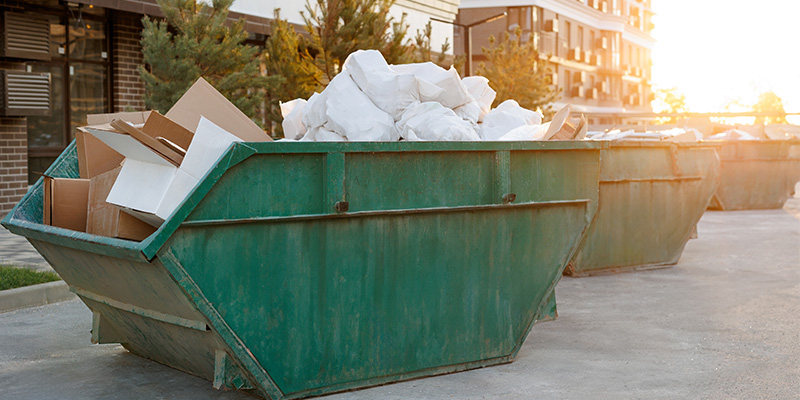The traditional “take-make-dispose” model of waste generation is unsustainable. A staggering 90% of raw materials used in manufacturing are turned into waste before the product leaves the factory, and 80% of those products are discarded within six months. This linear economy poses severe environmental and economic challenges, making the transition to a circular economy an urgent priority for organisations of all sizes.
What is a Circular Economy?
A circular economy decouples economic growth from resource consumption and waste. Instead of a linear approach, resources are retained within the system for as long as possible, reused, and ultimately regenerated at the end of their lifecycle. This concept transforms waste into value, fostering sustainability and reducing environmental harm. Learn more about the circular economy here.
The Core Principles of a Circular Economy
1. Design Out Waste and Pollution
At the heart of the circular economy is the aim to eliminate waste and pollution from the outset. This requires businesses to rethink how products are designed, focusing on sustainable materials and production methods that minimise environmental impact. For example, replacing single-use plastics with biodegradable alternatives or implementing manufacturing processes that reduce energy consumption can significantly lower waste outputs. By designing products with end-of-life considerations in mind, businesses can ensure resources are either reused or safely returned to the environment, contributing to healthier ecosystems and improving human well-being.
2. Keep Products and Materials in Use
A key principle of the circular economy is extending the lifecycle of products and materials through durability, repair, reuse, and recycling. This approach ensures valuable resources stay in circulation rather than being discarded. Businesses can design products that are easy to disassemble, repair, or upgrade, reducing the need for frequent replacements. For example, modular electronics allow individual components to be replaced instead of disposing of the entire device. This principle is particularly critical for materials with short lifespans, such as packaging, where innovative solutions like reusable containers or biodegradable wraps can prevent waste from accumulating in landfills.
3. Regenerate Natural Systems
The circular economy doesn’t just aim to reduce harm; it seeks to actively restore and improve natural systems. By mimicking nature’s regenerative cycles, businesses can develop practices that replenish ecosystems. For instance, using renewable energy sources like solar or wind power reduces reliance on finite resources, while returning organic waste to the soil as compost enhances soil fertility and supports biodiversity. This principle encourages industries to create systems that not only sustain the planet but actively contribute to its recovery, aligning economic growth with environmental health.
Origins of the Circular Economy
The concept of a circular economy has deep academic roots. In 1976, Walter Stahel presented his vision of a “performance economy” to the European Commission, coining the term “Cradle to Cradle.” The approach was further developed by architects and chemists such as Michael Braungart and Bill McDonagh, who designed frameworks for eco-friendly product creation. In the United States, John T. Lyle laid the groundwork for regenerative design, emphasising ecological and social systems that could revitalise communities and protect the planet. Today, institutions like the Lyle Center for Regenerative Studies continue to advance these principles.
Efforts to Promote the Circular Economy and Sustainable Waste Management
Global and national initiatives are critical to advancing the circular economy, focusing on collaboration, standardisation, and practical implementation.
PACE (Platform for Accelerating the Circular Economy)
The Platform for Accelerating the Circular Economy (PACE), led by the World Economic Forum, connects leaders from governments, businesses, and organisations to advance circular practices. By focusing on industries like plastics, food systems, and electronics, PACE fosters innovation and provides scalable solutions that address waste management challenges globally.
Circular Economy Standard BS 8001:2017
In the UK, the Circular Economy Standard BS 8001:2017 offers organisations a comprehensive framework for adopting circular economy principles. It guides businesses in designing out waste, improving product lifecycles, and embedding sustainability into their operations. This standard is adaptable for organisations across all sectors, providing practical tools to reduce environmental impact while enhancing competitiveness.
Benefits of a Circular Economy
Transitioning to a circular economy provides economic, environmental, and consumer benefits while creating new opportunities for businesses.
Economic Gains
Transitioning to a circular economy has the potential to revolutionise global economic systems by creating significant financial and employment opportunities. According to McKinsey & Company, adopting circular principles could inject $1 trillion into the global economy by 2025. This economic boost would be driven by reduced dependence on raw materials, improved efficiency, and the development of innovative business models. Additionally, the transition could generate 100,000 new jobs across various industries, particularly in sectors like recycling, remanufacturing, and sustainable product design. For businesses, the reduction in material costs and increased resilience against raw material price volatility offer substantial incentives to embrace circular practices.
Environmental Impact
A shift towards a circular economy could deliver profound environmental benefits, helping to mitigate climate change and preserve natural resources. In Europe alone, circular economy practices could halve carbon dioxide emissions by 2030 by reducing energy-intensive production processes and increasing the use of renewable energy sources. Furthermore, primary material consumption—such as fossil fuels, construction materials, and agricultural inputs—could be reduced by 32%, significantly easing pressure on the planet’s finite resources. By focusing on designing products for longevity and encouraging reuse, the circular economy minimises waste and pollution, fostering healthier ecosystems and reducing the environmental footprint of human activity.
Consumer Benefits
For consumers, the circular economy promises tangible financial advantages alongside environmental gains. Households could see a significant reduction in product costs, as manufacturers shift from linear “use-and-dispose” models to circular systems that prioritise durability and reuse. According to estimates, disposable incomes in Europe could rise by an average of €3,000 annually, giving consumers greater purchasing power while reducing overall living costs. Additionally, circular systems encourage the development of services like product leasing and repair, offering consumers access to goods and services in a more affordable and sustainable way. These benefits make the circular economy a win-win for both consumers and the planet.
Business Opportunities
For businesses, the circular economy offers a chance to reduce costs, stabilise against volatile raw material prices, and unlock new revenue streams through services like repair, refurbishment, and leasing. By adopting circular practices, companies can minimise waste, streamline operations, and align with growing consumer demand for sustainable products. This not only improves operational efficiency but also enhances customer loyalty, as environmentally conscious shoppers increasingly favour brands committed to sustainability.
AMA Waste’s Commitment to the Circular Economy and Sustainable Waste Management
At AMA Waste, we are proud to lead the way in sustainable waste management. Our commitment to the circular economy includes:
- 98% Recycling Rate: Almost all the waste we manage is recycled, reducing landfill dependency.
- Tree Planting Initiatives: We aim to plant 5,000 trees annually to offset our carbon footprint.
- Reusable Resources: All staff are provided with reusable bottles.
- Energy Efficiency: Energy-saving light bulbs are used across our offices.
By choosing AMA Waste, you’re partnering with a company that takes sustainable waste management seriously. Contact us today to discuss how we can help you meet your environmental goals. Get in touch with AMA Waste

